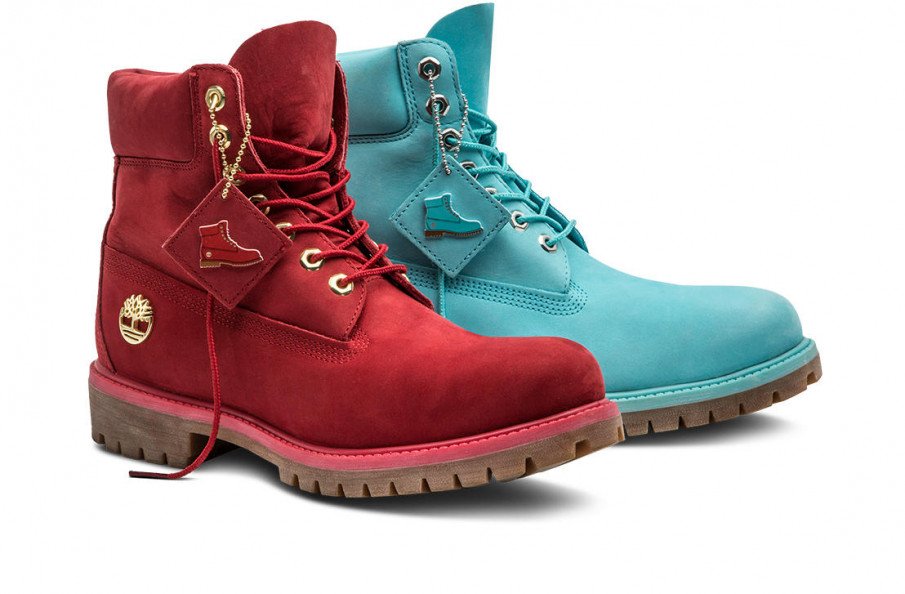by Genevieve Scarano
Timberland is making strides with its corporate social responsibility initiatives—including using more responsibly sourced cotton in its apparel and footwear products for consumers.
The outdoor retailer recently published its Q3 2017 Corporate Social Responsibility (CSR) performance data—which was broken down by three distinct pillars—product, outdoors and community. Among its numerous product benchmarks, Timberland reported that it increased responsibly sourced cotton in its product supply chain, with 79 percent of cotton used in its apparel items either BCI certified (42 percent), organic (30 percent) or U.S.-origin (7 percent)—up 10 percent since third quarter 2016.
For the third quarter, Timberland said most of its cotton sourced (86 percent) is for its internal global apparel manufacturing and that its production partners have increased their use of responsible cotton, including organic, over the past few years. Timberland’s remaining cotton is sourced by its licensees (7 percent) and Central America apparel operations (7 percent).
Moving forward, Timberland said it wants to source responsible cotton from the following categories—organic cotton, U.S.-origin cotton or Better Cotton Initiative (BCI)-certified cotton. The company set a goal to have 100 percent of the cotton used in its clothing products to be from these leading, more environmental sources by 2020.
“Chemicals used to grow cotton can be detrimental to the health of farmers, and seep into run-off water poisoning lakes, rivers, and waterways. As such, Timberland has had a longstanding goal of increasing our use of organic cotton year over year,” the company said in the report. “Organic cotton remains our preference; however, when organic cotton is not feasible, we commit to eliminating our use of conventionally grown cotton.”
In addition to upping its use of responsibly sourced cotton, Timberland also noted other product sustainability and compliance benchmarks in its report.
For the third quarter, Timberland’s average use of Volatile Organic Compounds (VOCs)—which it defines as chemical compounds that can easily evaporate in environmental conditions—was 52 grams per pair of shoes, which was a 4 percent improvement than the same period last year.
Specifically, for circularity, Timberland said recycled, organic and renewable (ROR) materials were used in 83.8% of all its shipped footwear in the third quarter—which was consistent with its 2015 results. Last year, Timberland incorporated more than 820,000 pounds of recycled PET in its footwear—equivalent to roughly 37.7 million plastic water bottles. Additionally, the company said 100 percent materials (at least 80 percent post-consumer) were used in its footwear packaging.
Timberland is currently working on minimizing the carbon footprint of its leather apparel, accessories and footwear products. Post-third quarter, the company reported that 93.7% of its overall leather volume for Timberland items were manufactured at tanneries with a gold or silver Leather Working Group (LWG) rating—indicated that these tanneries were upholding hide traceability and environmental practices across all areas of leather production. Despite this being slightly lower than previous years’ results, Timberland is aiming to further improve its leather products by facilitating more environmental audits at tanneries and limit its use of those that don’t comply with LWG’s regulations.
Timberland also reported progress with its factory compliance goals. At the end of Q3, Timberland products were manufactured in 365 factories worldwide—139 apparel factories, 97 factories producing licensed goods and accessories, 72 footwear factories, 28 tanneries, 17 fabric mills and 12 independent distributor factories.
The company audited its factories based on VF Corp.’s Terms of Engagement and Global Compliance Principles, which replaced its own code of conduct in 2011. Nearly half (40 percent) of factories received an accepted rating by Timberland—indicating that these facilities had no serious health, labor or safety issues throughout their operations. Even though 59 percent of the companies were rated “developmental,” these factories are working on improving working conditions and will receive follow up audits within the next six to nine months.
Πηγή: sourcingjournalonline.com


